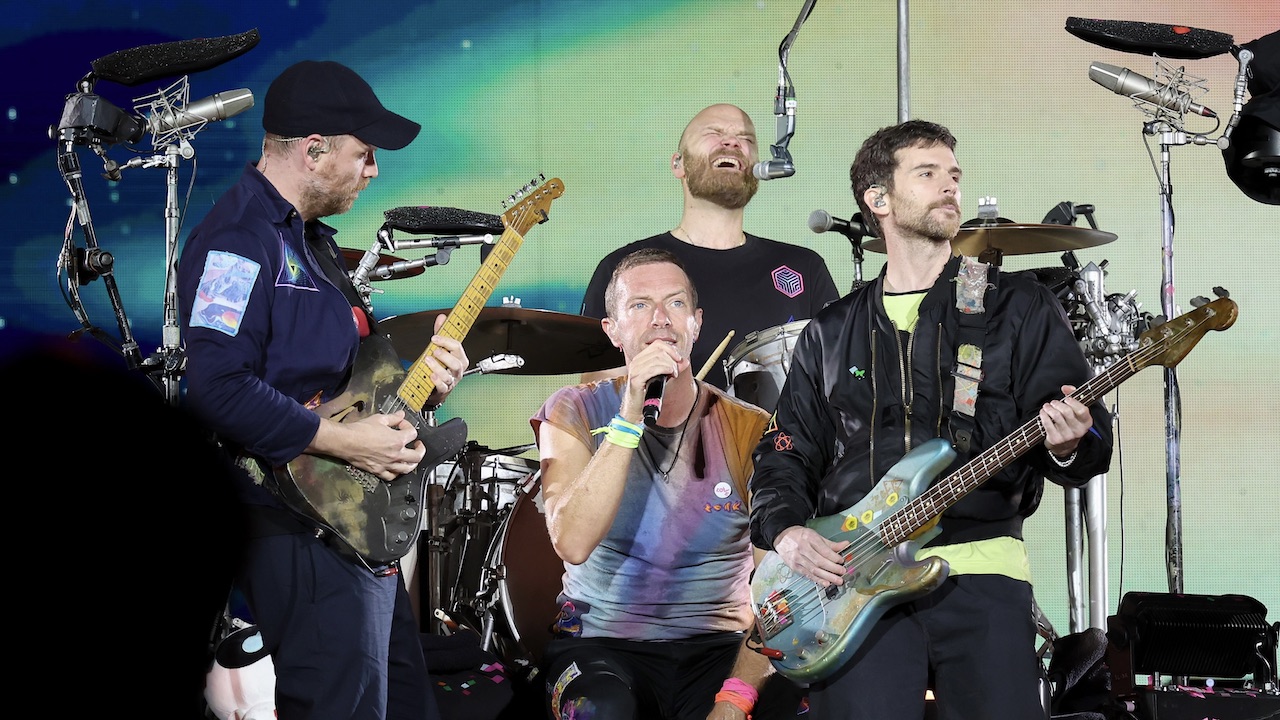
The biggest misconception about Coldplay is that they are boring. Chris Martin, Jonny Buckland, Guy Berryman and Will Champion may sometimes have made music you don’t like (possibly they have always made music you don’t like) but they have never been boring. Quite the opposite.
From the off, Coldplay have been restlessly inventive, a band always seeking to switch things up for their next move, pondering over how it might be bigger and bolder. How else do you go from being a group who started off making Jeff Buckley-esque fragile indie ballads to a band who got Noel Gallagher, Beyoncé, Brian Eno and soul legend Merry Clayton to appear together on the same track?
As their acclaimed Glastonbury 2024 headline slot showed, the quartet are well-stocked in euphoric singalongs for the masses, but there are also some curious, arty diversions tucked amongst those soaring stadium anthems. With the band's tenth album Moon Music (full title Music of the Spheres Vol. II: Moon Music) due in October, let's look at the story so far...

9. X&Y (2005)
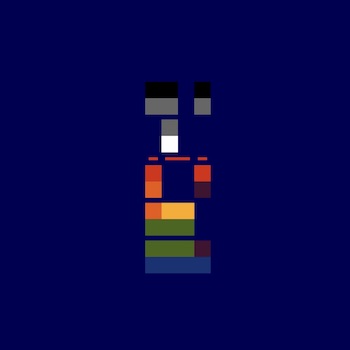
Coldplay made their third record during what Chris Martin has described as the toughest time for the quartet. Their mentor and non-playing member Phil Harvey had taken a time-out and they were struggling to acclimatise to their new status as one of the world’s biggest bands. The result was one of their more muddled efforts, an album that doesn’t seem to know whether to stick or twist.
The icy, Interpol-gone-U2 production was at odds with their soulful warmth, whilst Chris Martin’s melodic knack seemed to desert him right at the points these songs needed a lift-off – try to listen to White Shadows or Low and remember what the hook is by the time you get to the end. But X&Y still had its moments: opener Square One is an explosive, post-punk-tinged banger and Fix You ensured they’d emerge from their most testing period with at least one huge anthem that would stand the test of time.
8. Music Of The Spheres (2021)
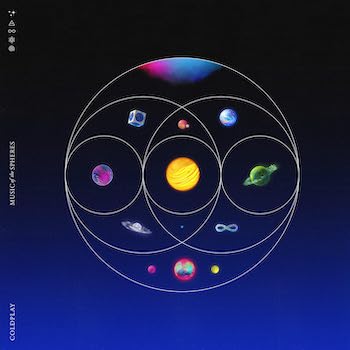
A harsh placing perhaps for a record that doesn’t really have any bad songs on it and also contains some corkers, but Music Of The Spheres slips down because it feels less like an album and more like a collection of gleaming pop songs designed to light a fire under the arse of one of the world’s most ambitious tours. That trek is still going strong three years later and Music Of The Spheres’ biggest moments – the synth-pop swirls of Higher Power, My Universe’s 80s power grooves and Humankind’s future-folk expanse – remain central in the setlist. You can’t help wonder, though, if their ninth record might have worked better as a series of EPs instead.
7. Ghost Stories (2014)
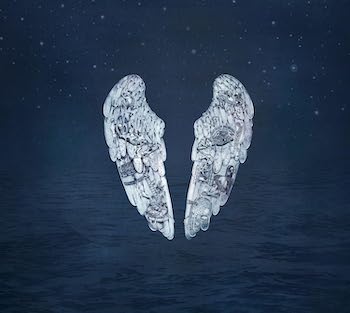
At the time of its release, Ghost Stories felt like Coldplay going into reverse. Viva La Vida… and Mylo Xyloto had seen the quartet grow ever more bombastic and far-reaching in their sound but here they drastically reined everything in. There was method in the minimalism: Chris Martin was coming out of his high-profile divorce – sorry, conscious uncoupling – with Gwyneth Paltrow and it’s hard not to hear Ghost Stories’ pared-back contemplatives as a document of the split.
With no plans to tie it into a tour, the lack of a need to infuse it with live drama opened up their sonic world, be it the gliding, orchestral beats of True Love, the Bon Iver-ish ambience of Midnight or the plaintive piano ballad O. Of course, it wasn’t entirely stripped-down because they couldn’t help but stick a monster anthem on there. A Sky Full Of Stars’ rave-y bounce sticks out like a sore thumb, almost comically so, but it’s a banger so stop going on about it, yeah?
6. A Head Full Of Dreams (2015)
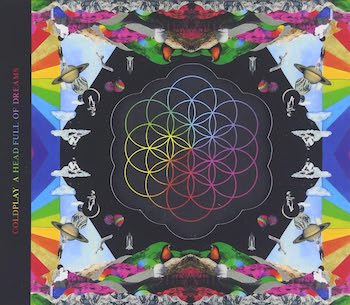
Chris Martin saw the group’s seventh record as a landmark in two ways. First off, he was keen to make something that lived up to all the special seventh albums his heroes had made (In Rainbows, Achtung Baby, Out Of Time, Born In The U.S.A., Beggars Banquet, Revolver, Blonde On Blonde, etc) and reasoned that because the colour spectrum had seven colours in it, Coldplay’s seventh album was the end of an era.
Work began on it immediately after they’d completed Ghost Stories, the idea being it would be a counter-point to that record’s stripped-down electronica. It certainly was: A Head Full Of Dreams was a bold, technicolour modern pop record. They’d never been so collaborative, working with megahit songwriting team Stargate and roping in guests including - deep breath - Beyoncé, Noel Gallagher, Merry Clayton, Brian Eno, Davide Rossi, Avicii, Tove Lo and even Martin’s ex-wife Gwyneth Paltrow to help them out. The result is a jubilant set that closed the door on one chapter of the band and opened another.
5. Everyday Life (2019)
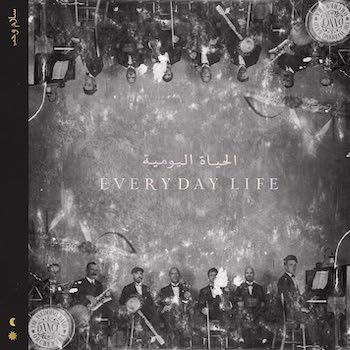
Establishing a go-to pattern for modern day Coldplay, they followed the full throttle exuberance of A Head Full Of Dreams with one of their most idiosyncratic and experimental albums.
In a similar vein to Ghost Stories, Coldplay made their eighth album knowing that they weren’t going to tour it and, once again, were freed up by that knowledge. Back in 2011, they had planned to make an acoustic record titled The Wedding Album, an idea that was binned when Martin wrote a gigantic singalong titled Paradise that they decided was too good to sit on a shelf. This was meant to be a return to that concept but again it shapeshifted into something else, a broad recalibration of their sound. They couldn’t keep upping the ante, they reasoned, and so they went looking elsewhere. It resulted in a record that takes in Afrobeat grooves, lo-fi blues, gospel, lightly pulsing rhythmics, campfire folk and – of course – one massive anthem. Not a perfect album by any means, but the sound of the world’s biggest band taking such risks was something of a thrill in itself.
4. Mylo Xyloto (2011)
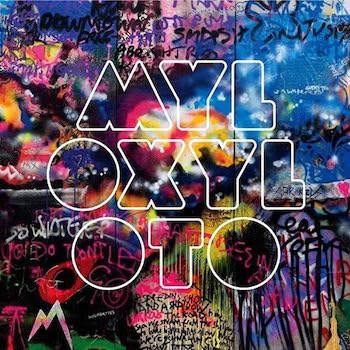
Coldplay were in a confident, buoyant mood as they approached their fifth record – you’d have to be if you decided to call your new album Mylo Xyloto, wouldn’t you? Viva La Vida… had put them back on track and now they set out to make their most dazzling record yet, drenching their sound in a luminous electronic-pop sheen, the result a futuristic neon rock-pop record that that sounded like Blade Runner having its frown turned upside down by The Lego Movie. The key was that all of it was built around some of their biggest and best hooks yet – Paradise and Charlie Brown were earworms supreme. There was no longer any question about it, Coldplay were the natural heirs to U2.
3. Parachutes (2000)
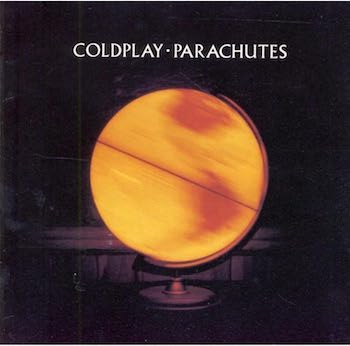
Twenty-four years on, it’s hard to square the communal exhilaration of the band Coldplay have become with the introverted, plaintive acoustic ballads of their debut. Parachutes is both the sound of a fledgling band drawing heavily on their love of Radiohead and Jeff Buckley but also exploring their own blossoming alchemy: the mix of Martin’s indelible melodies bouncing off of Buckland’s shimmering guitar licks, the sense that for all the restrained folk moments, what they really wanted to do was reach for Row Z (which is exactly what breakthrough single Yellow and closer Everything’s Not Lost did). It was a massive hit, selling over a whopping 13 million copies. They were limbering up for something bigger, though, and would never seek to repeat the trick.
2. Viva La Vida Or Death And All His Friends (2008)

Viva La Vida… is like Coldplay’s second debut. X&Y had pushed them to the edge and there is a parallel universe where they came out of that fraught period as one of those bands trapped into a cycle of maintaining what they’ve got, ticking along playing arenas, slipping down the bill at festivals, one of them becoming a judge on a reality TV music show. Not so our version of Coldplay: what they did was rip it all up and start again.
Producer and Think Outside The Box Expert Brian Eno was crucial to the restart, helping to remould a band who sound revitalised here, where U2 expansionism met rustic Arcade Fire-ish holleralongs (the title track, Violet Hill, Lost!) but also where they realised great melodies didn’t always have to be boomed out like you were trying to see if the next village could hear. The soulful Strawberry Swing, later covered by Frank Ocean, is practically hushed and it’s the catchiest thing on there. A marvel of a record.
1. A Rush Of Blood To The Head (2002)
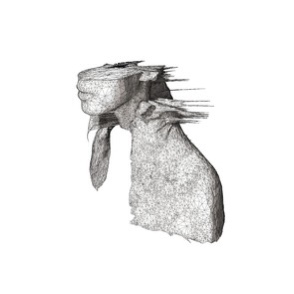
But it’s not Number One, because six years earlier Coldplay made this. It was startling to hear the songs from their second record when they unveiled them at their first Glastonbury headline slot, months ahead of release, in 2002. The group who had made Yellow had morphed into a muscular rock band, songs such as Daylight, God Put A Smile Upon Your Face and Warning Sign melding the wiry post-punk of Echo And The Bunnymen and Simple Minds with gargantuan pop hooks. The introduction of Martin playing piano, an instrument only sparingly used on their debut, added a rich edge to their sound, lending a cosmic dynamism to Clocks and a melancholic depth on lighter-waving epic The Scientist. No doubt they had Alan McGee’s “Coldplay: bedwetters’ music” dig ringing in their ears as they made it. This was the record when Coldplay put their big boy pants on.







